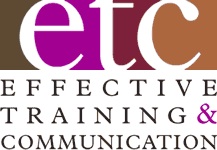This article is second in a series on audience-centric presentations.
My previous article introduced an overview of Audience-Centricity, the single best strategy for getting into the Presenters Hall of Fame. Now, we’ll begin the process of enhancing your Presenter’s Tool Kit. Some of you will find new tools to add to your kit. Others will find new ways to use existing tools. And all of you can use this opportunity to sharpen all your presenter’s tools for maximum results.
Let’s start with the most critical component for creating Best-in-Class Audience-Centered presentations – Defining Objectives. Most presentations that fail or misfire do so because of poor planning and strategy at this step. You start with the end in mind, as Dr. Stephen Covey teaches us, by defining specific outcomes for your presentation.
As a result of hearing your message, what do you want your audience to know that they didn’t know before (information) or to be able to do what they couldn’t do before (training) or to believe what they didn’t believe before (persuasion)? And, what action do you want them to take as a result? The more precisely you define these outcomes, the easier it will be to develop your message accordingly … and to know if you succeeded.
One strategy for defining your presentation objectives is to determine what specific communication or information problem you’re trying to solve. Said another way, what question are you trying to answer? But, don’t think serious problem here. The simple absence of important information is a problem. If you’re changing the company’s security procedures and employees don’t know the new one yet, the absence of that important information is a problem. You then create a presentation so they will know the new procedures and, therefore, you solve that information problem.
Also assess the value of your presentation objectives by determining if they will serve an important business need and will benefit the audience. They always want you to answer their question, ‘What’s in it for me?’
And make sure you create ‘SMART’ objectives. Are they Specific, Measurable, Achievable, Realistic and Time bound? The more effort you expend at this stage, the better your results will be.
Finally, evaluate your objectives in light of the specific Information Continuum involved. What information does the audience already have about the problem before you present your message and how will that influence how you define objectives? What other information will you share with them after the presentation and how will that influence your objectives?
So, to create a Best-in-Class Audience-Centric presentation, start with a precise definition of intended outcomes. Answer the critical questions as you create ‘SMART’ presentation objectives and evaluate them in the context of the Information Continuum. And, never forget that failing to plan is planning to fail. Now, go present with more Power and Success.

